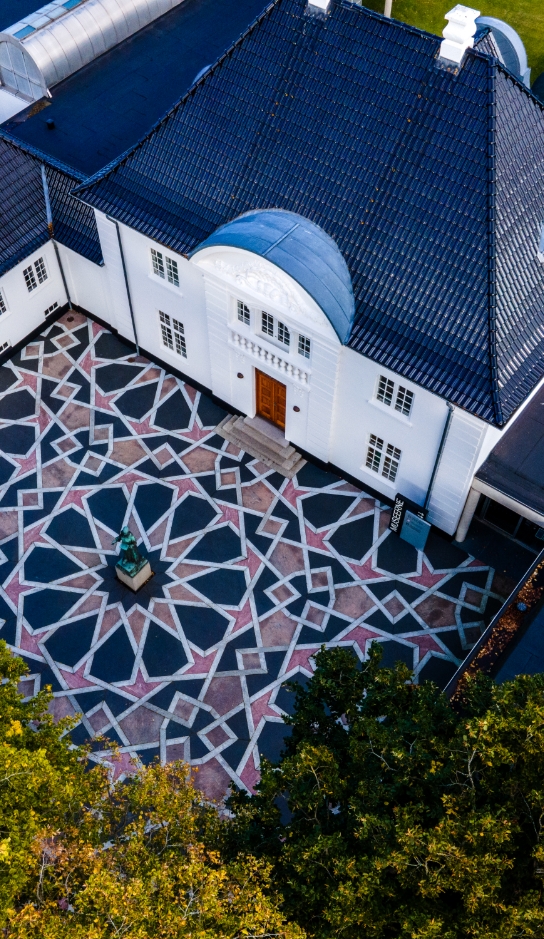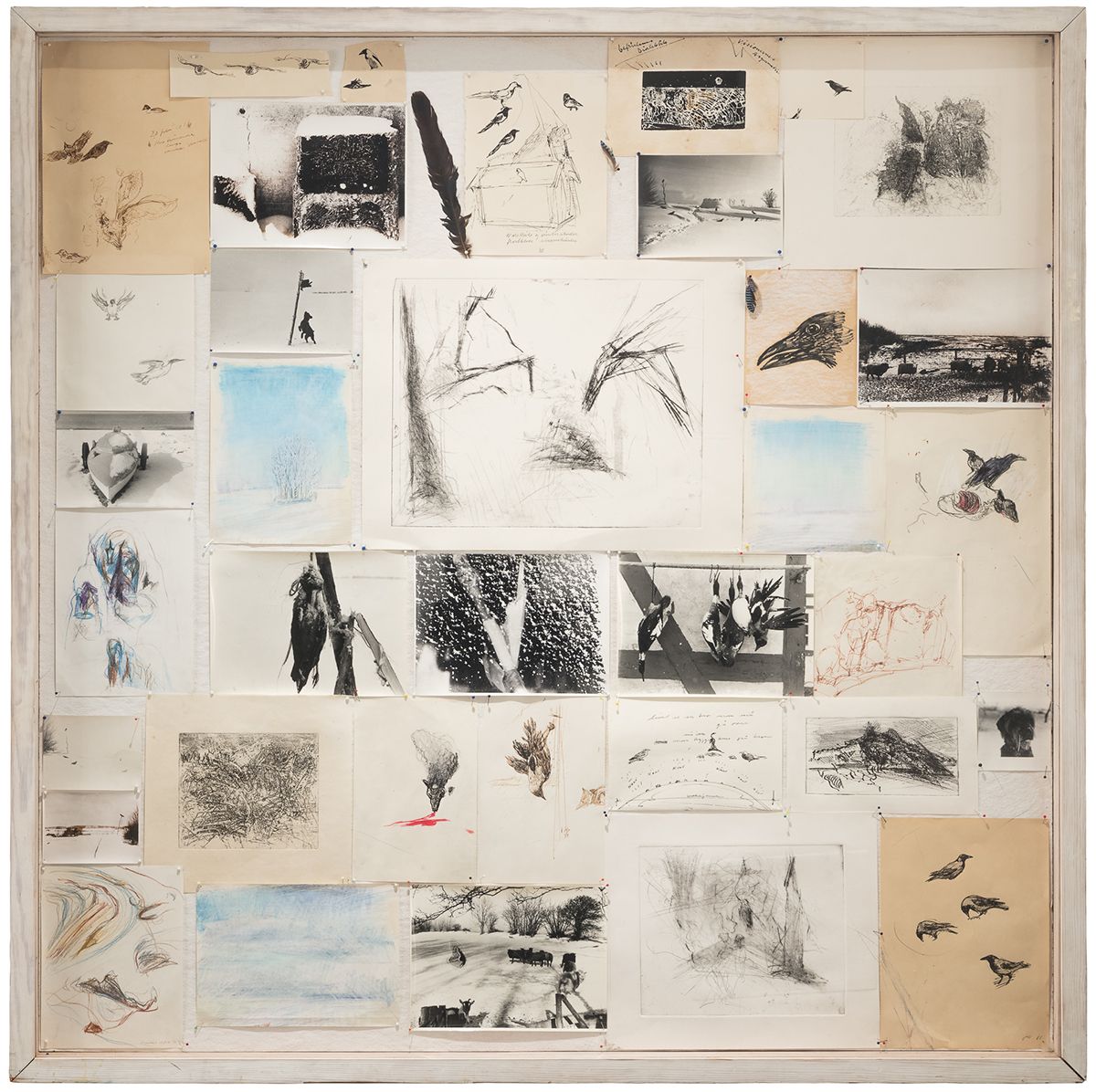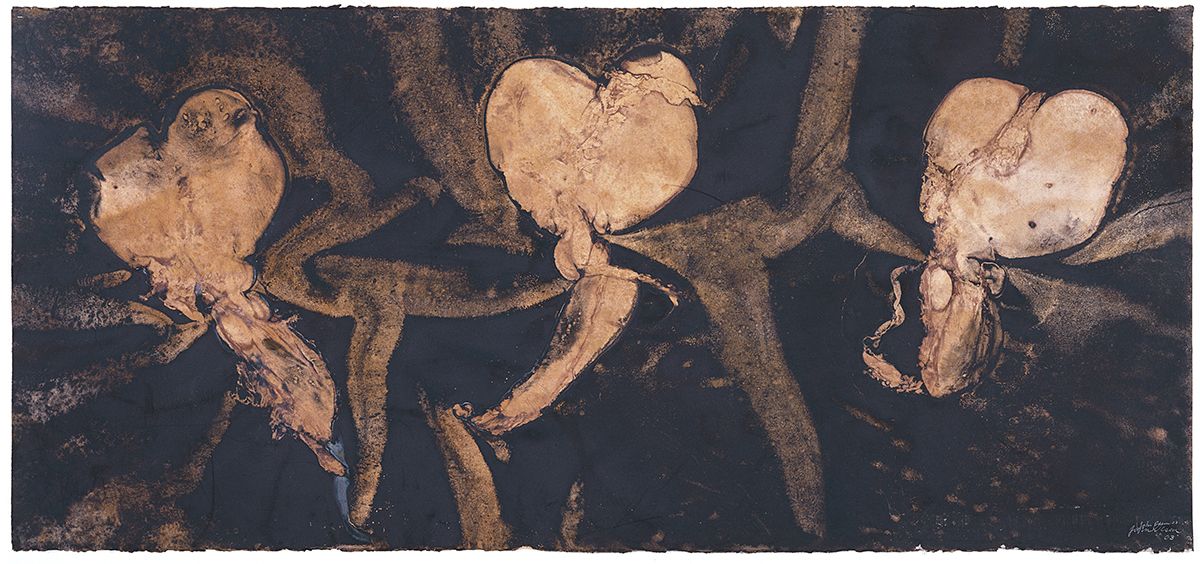John Olsen
Collection
John Olsen (1938-2019) was one of Denmark’s most prominent visual artists. He left behind an impressive and extensive body of work, a considerable part of which is located at Holstebro Kunstmuseum.
The selection of works in the museum’s collection date back to 1958. The naturalistic expressions of the bird images from the beginning of his career gradually disappears in his fully matured work, in which, through deep investigations into the characteristics of the material, he achieved a different type of objectivity; one that seems even closer to reality than traditional reproductions of nature.
Nature and culture
John Olsen’s works take their point of departure in the natural surroundings where he lived and worked, and from which he drew his inspiration, motifs, and materials. In close-up studies of Icelandic rock walls, Faroese mountains and the cast-offs of civilisation, he seized upon modest details which were transformed into condensed structures with a beauty that is entirely their own. In the choice of perspective, they resemble nature itself: as something seen and experienced.
Picture boards
A similar phenomenon is found in John Olsen’s slate boards and photographic reliefs, where living and dead birds are reproduced with great simplicity and intimate precision. In a number of collages from the 1980s, clippings, photographs and drawings are affixed with pins to noticeboards and framed behind glass. Here, it is the selection and framing itself that becomes of high importance. The logic of the picture boards is associative and borne by memory, while at the same time, they illustrate the creative process by which visual impressions are processed in the creation of new art.
The calligraphy of nature
Colour, form and materiality are closely interlinked in John Olsen’s artistic practice, which continues to draw our attention to the beauty of decay. This is also evident in the large paper works with the imprints of the entrails of slaughtered animals, or the wandering tracks of snails through charcoal and pigment. The principle of chance is prevalent in works like these, where nature participates on an equal footing with the artist.
"Life wills"
In John Olsen’s unsentimental and powerful depictions of natural growth and decay, we gain a greater understanding of death as a prerequisite for the continuation of life; of joy and pain, loss and pleasure. For “life wills”, as he so often said. In a time when man-made natural and environmental disasters are very much on the agenda, John Olsen’s art now seems more relevant than ever before.
Brief biography
John Olsen (1938-2019) originally trained as a craftwork painter, but later graduated from the Royal Danish Academy of Fine Arts.
In 1967 he left Copenhagen and eventually settled at Sundsgården near Ringe, on South Fyn. He was an enthusiastic hunter, kept sheep and in general cultivated the experience of nature with great intensity. In the mid-1960s, John Olsen visited the Faroe Islands for the first time, and he was to return many times to the North Atlantic in subsequent years.
His artistic production was large and varied, but his real breakthrough did not come until the 1980s. In 1995, he was Denmark’s representative at the Venice Biennale, where he presented, amongst other works, the large sculpture Resonans. A bronze version of this work is now located in the museum’s sculpture garden.
In the following years, the large installation Undrekammer (Chamber of Wonders) was presented at Holstebro Kunstmuseum and is now on permanent exhibition on the museum’s lower floor. At Holstebro Town Hall, there are also a number of the artist’s painted tiles. In addition, many of his large sculptural works may be found in various locations around Denmark, and the artist is also richly represented in the country’s art museums.
In 1985, John Olsen was awarded the Eckersberg Medal, and in 1995 he received the Thorvaldsen Medal – the highest official recognition that a Danish artist can achieve.
Colour, form and materiality are closely interlinked in John Olsen’s artistic practice, which continues to draw our attention to the beauty of decay.



